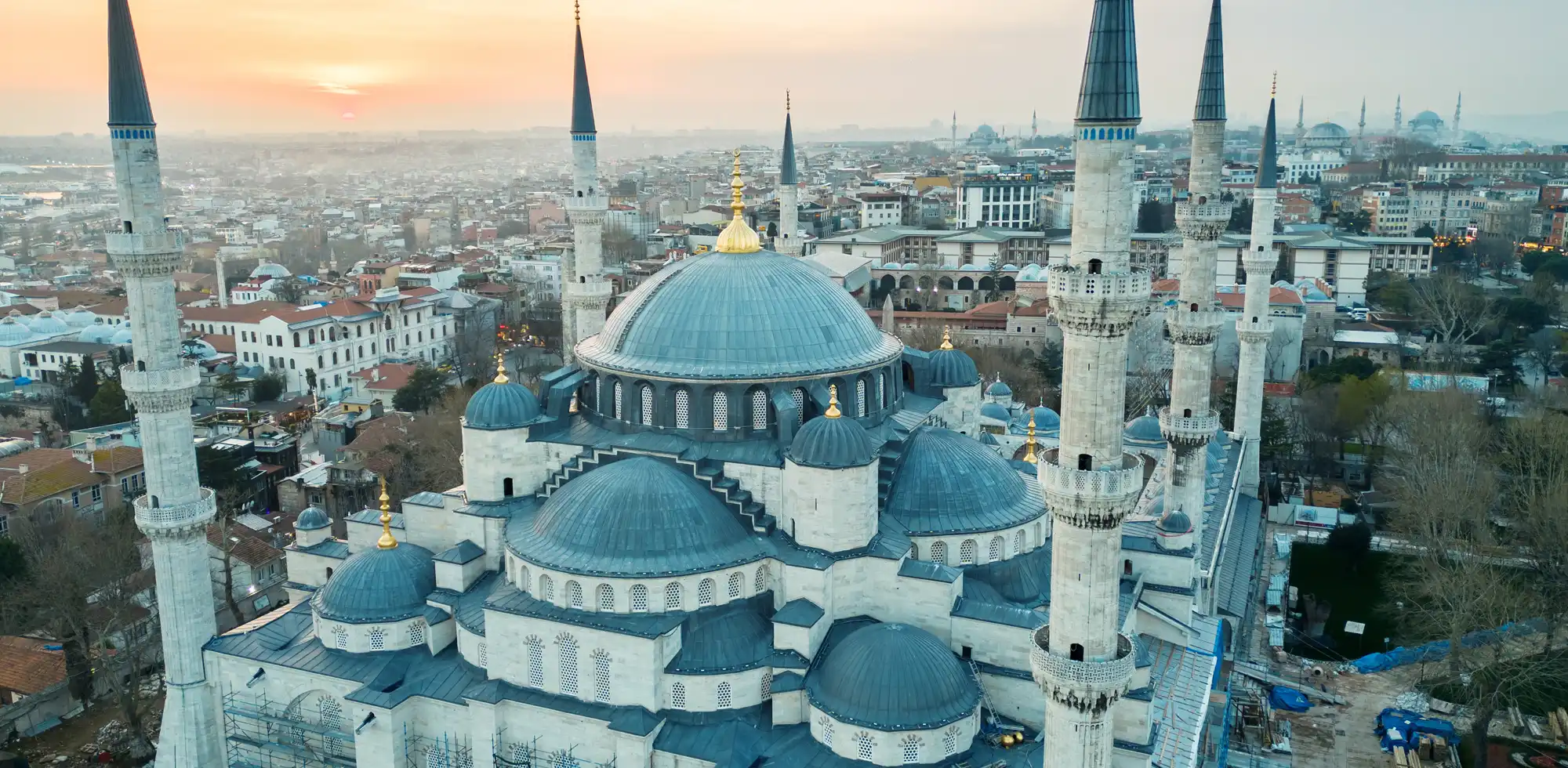⬜ The Blue Mosque – An Icon of Ottoman Architecture in Istanbul
In the heart of old Istanbul, right beside Hagia Sophia, the Sultan Ahmed Mosque stands tall in its beauty and grandeur. Known worldwide as the Blue Mosque, it is one of the most magnificent mosques in the Islamic world and a must-visit landmark. Its name comes from the stunning blue tiles that adorn its interior, casting a serene and spiritual atmosphere.
⬜ The Story Behind a Timeless Monument
Commissioned by Sultan Ahmed I in 1609 and completed in 1616, the mosque was built as a lasting legacy to reflect the glory of the Ottoman Empire. Today, it stands as a testament to Islamic art and architecture, and one of Istanbul’s most iconic religious and historical symbols.
⬜ Unmatched Architectural Brilliance
Designed by architect Mehmet Agha, a student of the legendary Sinan, the mosque beautifully blends classic Ottoman design with Byzantine influences. It features a grand central dome reaching 43 meters in height, flanked by four semi-domes and surrounded by six soaring minarets — a unique feature in Istanbul’s skyline.
⬜ Why Is It Called the Blue Mosque?
The name comes from the over 20,000 blue Iznik tiles that embellish the interior, featuring elegant tulip and carnation motifs. The ambiance is enhanced by stained glass windows that gently filter sunlight into the mosque, highlighting intricate Arabic calligraphy carved throughout.
⬜ The Six Minarets – A Bold Statement
At the time of construction, the mosque’s six minarets matched the number at the Grand Mosque in Mecca, sparking controversy. To resolve this, Sultan Ahmed funded the construction of a seventh minaret in Mecca, further elevating the Blue Mosque’s significance and uniqueness.
⬜ A Must-Visit on Your Trip to Istanbul
The Blue Mosque offers more than just a tourist photo stop — it’s a journey into spirituality, history, and artistic mastery. Its distinctive design, detailed decorations, and cultural depth make it a cornerstone of any trip to Istanbul.




Comment (0)